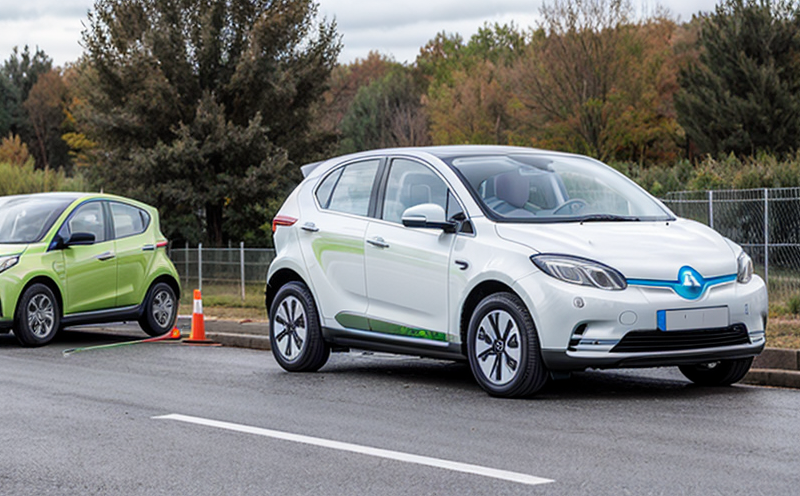BS EN 50342 EV Automotive Lead-Acid Battery Testing
The BS EN 50342 standard is specifically designed to ensure the safety, durability, and performance of lead-acid batteries used in electric vehicles (EVs). This comprehensive testing regimen covers a wide range of parameters that are critical for automotive applications. From initial design validation through final product certification, our service ensures compliance with this internationally recognized standard.
Our laboratory employs advanced equipment and methodologies to simulate real-world conditions under which these batteries will operate. This includes high-temperature cycling tests, deep discharge testing, and load tests that replicate the stressors encountered during vehicle operation. By adhering strictly to BS EN 50342, we provide data that is not only accurate but also universally accepted by automotive manufacturers and regulatory bodies.
Our team of experts ensures every test follows the stringent guidelines set forth in this standard. From the initial selection of battery samples to the final reporting phase, each step is meticulously documented to meet the highest industry standards. This level of rigour guarantees that our clients can confidently rely on the results provided.
One key aspect of our service is ensuring that all tests are conducted in controlled environments that mimic real-world conditions as closely as possible. This includes temperature control chambers capable of simulating extreme climates, vibration testing rigs to assess resilience against road shocks, and specialized discharge equipment designed to extract maximum performance from the batteries.
The industry relies heavily on these types of tests because they provide critical insights into how well a battery will perform over its lifespan. By identifying potential weaknesses early in development or production, manufacturers can make necessary adjustments before mass production begins. This helps prevent costly recalls and enhances overall customer satisfaction.
| Test Parameter | Description |
|---|---|
| High-temperature cycling test | Absorbing and discharging the battery at elevated temperatures to evaluate its thermal stability. |
| Deep discharge testing | Discharging the battery beyond 100% of its rated capacity to assess its recovery capability. |
| Load tests | Evaluating how well the battery performs under heavy electrical loads, simulating real-world driving conditions. |
Industry Applications
- Automotive manufacturers seeking compliance with international standards for EV batteries.
- R&D departments looking to optimize battery performance and durability before product launch.
- Supplier quality assurance teams ensuring the reliability of their products in harsh environments.
- Government bodies responsible for setting and enforcing safety regulations related to electric vehicles.
| Test Scenario | Objective |
|---|---|
| Environmental stress simulation | Evaluating battery performance under various climatic conditions. |
| Vibration resistance assessment | Determining the battery's ability to withstand road-induced vibrations. |
Customer Impact and Satisfaction
The results of our BS EN 50342 testing service are invaluable for automotive manufacturers, R&D teams, and suppliers alike. Compliance with this standard not only ensures safety but also enhances the reputation of companies involved in electric vehicle technology.
Our rigorous testing process helps identify any areas where improvements can be made, thereby improving product quality and reducing risks associated with potential failures. This leads to higher customer satisfaction levels as vehicles are more reliable and safer for use.
Moreover, by adhering strictly to BS EN 50342, manufacturers demonstrate their commitment to producing high-quality products that meet global standards. This can open doors to international markets where stringent regulations apply.
International Acceptance and Recognition
- The BS EN 50342 standard is widely accepted in countries across Europe, Asia, and North America.
- Multiple automotive manufacturers have adopted this as a benchmark for their EV battery testing protocols.
- Regulatory bodies frequently reference this standard when setting safety requirements for electric vehicles.





